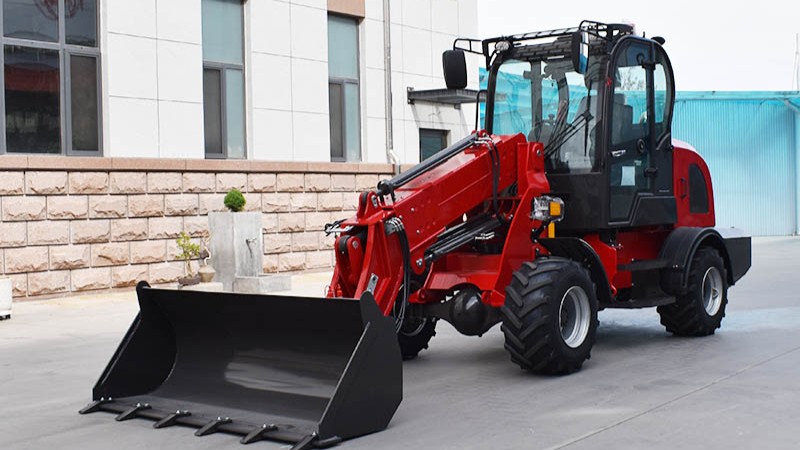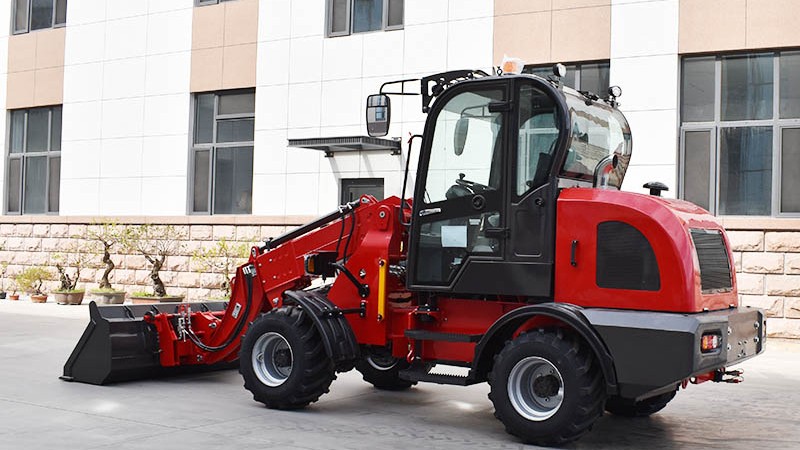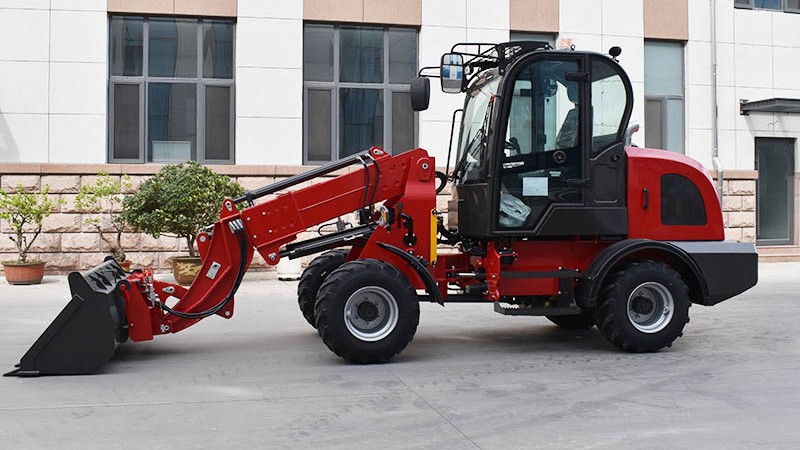The question of whether telescopic loaders are safer than cranes for rooftop material placement has gained significant attention in the construction industry, driven by a growing emphasis on workplace safety and efficiency. Rooftop operations involve unique challenges, including height-related risks, weight distribution issues, and environmental factors like wind and uneven surfaces. Telescopic loaders, also known as telehandlers, are versatile machines equipped with extendable booms that allow for precise material handling at various heights and angles. Cranes, on the other hand, are traditional lifting devices known for their high load capacity and ability to hoist heavy items over long distances. Safety comparisons often revolve around stability, operator training requirements, and accident statistics. For instance, telescopic loaders are praised for their mobility and adaptability on construction sites, potentially reducing the need for complex rigging and multiple equipment setups. However, cranes have a long history of use in large-scale projects, offering proven reliability in handling bulky materials like steel beams or precast concrete. This discussion is crucial for project managers and safety officers aiming to minimize accidents and comply with regulations such as OSHA standards in the United States or similar guidelines globally. By examining real-world case studies and expert opinions, this article delves into the nuances of each equipment type, considering aspects like center of gravity, overturning risks, and the impact of human error. Ultimately, the goal is to provide a balanced perspective that aids in selecting the right equipment for specific rooftop tasks, ensuring both worker safety and project efficiency.
Telescopic loaders offer several safety advantages that make them a preferred choice for many rooftop material placement scenarios. Their design incorporates features like four-wheel drive, stabilizers, and advanced hydraulic systems that enhance stability on uneven terrain, which is common in construction sites. The extendable boom allows operators to place materials precisely without repositioning the machine frequently, reducing the time workers spend at height and lowering the risk of falls or struck-by incidents. Additionally, telescopic loaders often come with enclosed cabs that provide better visibility and protection for operators, integrating safety technologies such as load moment indicators and anti-tip systems. These devices alert operators to potential overloads or instability, preventing accidents before they occur. In contrast, cranes require extensive setup, including outriggers and counterweights, which can be time-consuming and prone to errors if not properly installed. Crane operations also involve more complex signaling and communication between the operator and ground crew, increasing the likelihood of misunderstandings that could lead to drops or collisions. Statistics from industry reports indicate that incidents involving cranes often result in severe injuries or fatalities due to their high load capacities and the forces involved in lifting. For example, a study by the International Association of Bridge, Structural, Ornamental, and Reinforcing Iron Workers highlighted that crane-related accidents account for a significant portion of construction fatalities, whereas telescopic loaders have a lower incident rate in rooftop applications due to their controlled, gradual movements. Furthermore, telescopic loaders can be equipped with attachments like forks or buckets, allowing for versatile handling of various materials without the need for additional equipment, thus streamlining operations and reducing exposure to hazards. Training for telescopic loader operators is generally more straightforward, focusing on machine-specific controls and safety protocols, whereas crane certification involves rigorous programs covering complex physics and emergency procedures. This ease of use contributes to a safer work environment, especially in projects with tight deadlines or limited space, where quick adaptability is essential.
Despite the safety benefits of telescopic loaders, cranes remain indispensable in certain rooftop material placement situations, particularly for heavy or oversized loads that exceed the capacity of most telehandlers. Cranes, such as tower cranes or mobile cranes, are engineered to handle weights of several tons and can lift materials to great heights with precision, making them ideal for skyscrapers or large industrial buildings. Their safety record, when operated correctly, is supported by decades of engineering refinements, including fail-safe mechanisms like overload protection devices and automated braking systems. However, the risks associated with cranes are more pronounced; they require a larger safety perimeter and are susceptible to environmental factors such as high winds, which can cause swinging loads or structural failure. Incidents like crane collapses have led to high-profile disasters, emphasizing the need for meticulous planning and adherence to safety standards. For instance, in urban settings, crane operations often involve traffic management and public safety concerns, adding layers of complexity that telescopic loaders typically avoid. Moreover, crane setup demands thorough site assessment and soil testing to ensure stability, whereas telescopic loaders can often operate on compacted surfaces with minimal preparation. From a training perspective, crane operators must undergo extensive certification, which includes understanding load dynamics, wind effects, and emergency response, reducing human error but also increasing the time and cost invested. In comparison, telescopic loaders offer a more agile solution for smaller-scale rooftop tasks, such as placing HVAC units or solar panels, where their lower center of gravity and compact design reduce the risk of tipping. Industry experts note that while cranes excel in vertical lifting, telescopic loaders provide horizontal reach advantages, allowing for safer material placement in confined areas. Ultimately, the choice between the two should factor in project-specific variables like load weight, site accessibility, and weather conditions, with a focus on integrating safety protocols such as regular equipment inspections and crew training to mitigate risks.
In conclusion, the safety comparison between telescopic loaders and cranes for rooftop material placement reveals that neither is universally superior; instead, their suitability depends on contextual factors like project scale, load requirements, and environmental constraints. Telescopic loaders tend to be safer for applications involving moderate weights and complex access points due to their maneuverability and integrated safety features, which reduce the likelihood of accidents like falls or equipment tip-overs. On the other hand, cranes are necessary for heavy-duty tasks but come with higher inherent risks that require rigorous management through advanced planning and specialized operator skills. Industry trends show a growing adoption of telescopic loaders in residential and commercial construction for their versatility and lower accident rates, supported by data from organizations like the National Institute for Occupational Safety and Health (NIOSH). However, cranes continue to play a vital role in infrastructure projects, where their lifting capabilities are unmatched. To enhance safety regardless of equipment choice, experts recommend combining technological innovations—such as telematics for real-time monitoring—with comprehensive training programs and adherence to international safety standards. For example, using drones for site surveys can complement both telescopic loader and crane operations by providing aerial views that identify potential hazards. As the construction industry evolves, the integration of hybrid equipment and automated systems may further blur the lines between these machines, offering new safety solutions. Ultimately, a risk assessment-based approach, involving consultations with safety engineers and equipment manufacturers, will help determine the best option for rooftop material placement, ensuring that worker protection remains paramount while achieving project goals efficiently and effectively.
Post time:Oct.29.2025



